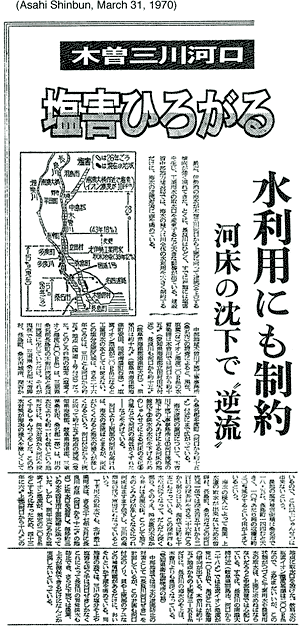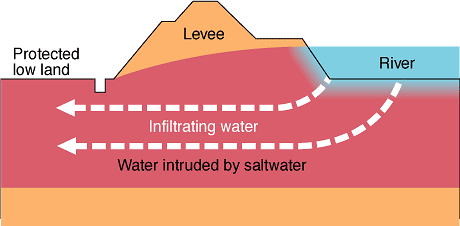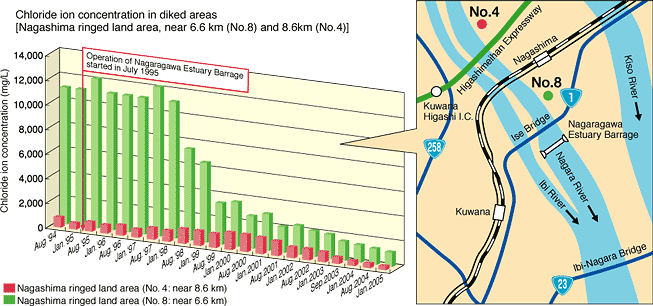Saltwater Intrusion and Salt Damage
In the lower reaches of the three Kiso rivers facing Ise Bay, saltwater has been entering under fresh water as if a wedge were inserted and intruding upstream, and the inhabitants have suffered salinization of both river water and ground water used as drinking and agricultural water supplies, and soils on farmlands. The ground subsidence caused by the need to draw on very large amounts of ground water since the mid-1950s led to saltwater intrusion further upstream, aggravating the saline damage. As a result, Nagashima-cho, a town in the Nagara's estuary area, was forced to abandon the use of both river water and ground water, and severely damaged farmland was converted into land for housing, etc. In the mid-1960s, a section of the Kiso River far upstream was used as a water source; to prevent saline damage, water is currently being made available at great cost, for example, by conveying untreated water from the great Kiso river weir for use as tap water and agricultural water. Salinity of ground water in the Nagashima-cho area used to be very high before the Nagaragawa Estuary Barrage went into service. Since the barrage went into service, salinity of waters upstream of the barrage has decreased, and the salinity of ground water in the Nagara river area is on the decline. Salinity remains high, however, in other areas, indicating that once water is salinized, salinity cannot be removed easily.
Newspaper article reporting saline damage in downstream areas of the three Kiso rivers

Infiltration of saltwater from the river into protected low land

Salinity of ground water in Nagashima ringed land area
